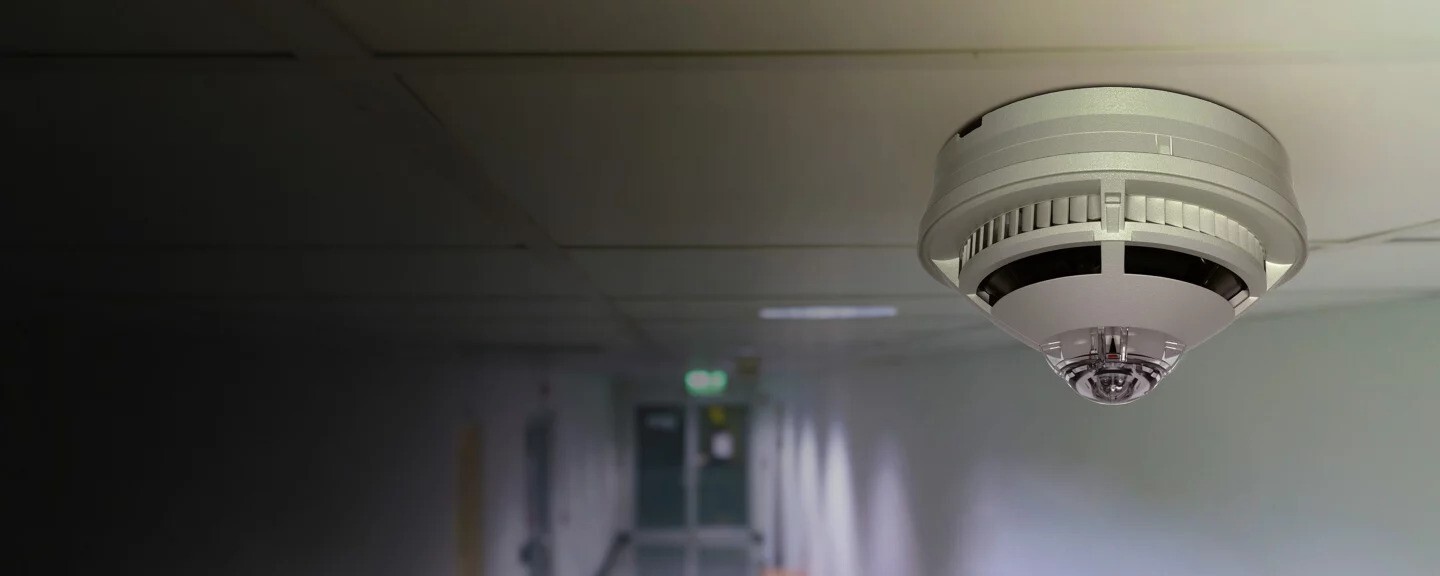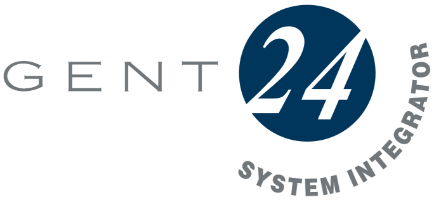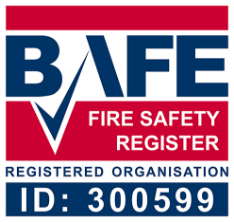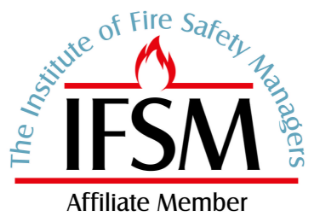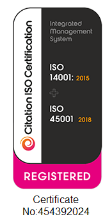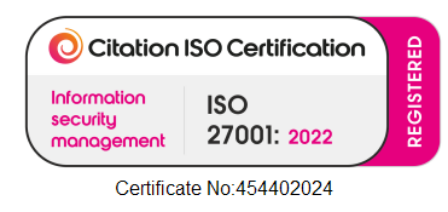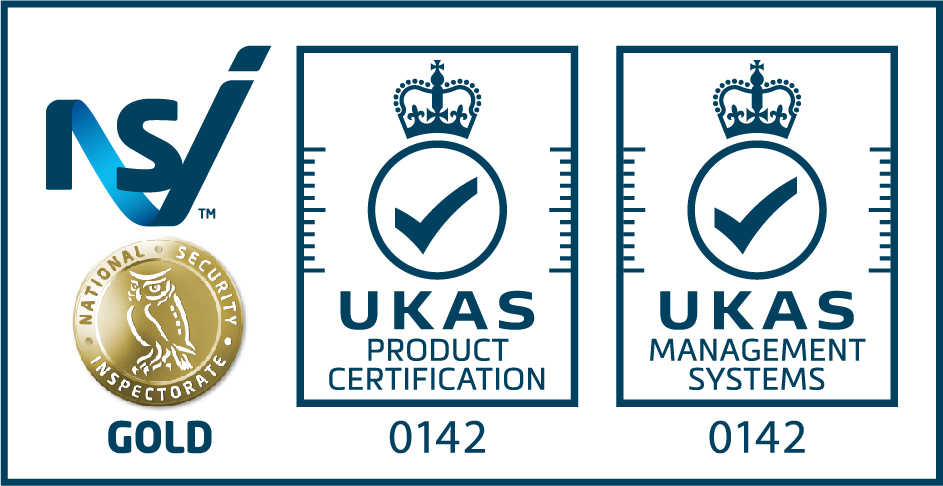Fire door inspections are a critical component of your building’s passive fire protection strategy, yet they’re often overlooked until it’s too late. As a facilities manager or building owner, ensuring the integrity of your fire doors isn’t just about ticking a compliance box – it’s about protecting lives, property, and your business reputation.
At Logic Fire and Security, we understand the weight of responsibility you carry. Our comprehensive Fire Door Inspection services are designed to give you peace of mind, ensure regulatory compliance, and protect what matters most to you.
Is It a Legal Requirement to Inspect Fire Doors?
The simple answer is yes. Fire resisting doorsets are vital passive fire protection measures found in almost all buildings, providing protection to escape routes and areas of high fire risk. In most buildings, this fire protection is a legal obligation under both Building Regulations and the requirements of the Regulatory Reform (Fire Safety) Order 2005 in England and Wales (and similar legislation in Scotland and Northern Ireland).
Fire Safety legislation for England and Wales, Scotland and Northern Ireland highlights the legal responsibilities of reducing the risk of fire spreading within premises. Penalties for failing to comply with the legislation carry unlimited fines or a prison sentence for organisations and landlords.
As the Responsible Person for your building, you must ensure:
- A suitable and sufficient fire risk assessment has been undertaken
- Regular inspection and maintenance of fire doors
- Proper documentation of all fire safety measures
- Immediate remedial action when deficiencies are found
Building owners, facilities managers, and risk assessors should not underestimate their legal responsibilities when it comes to fire safety, as this really can make the difference between life and death of those that fall under your responsibility. You may also want to consider implementing regular checks of the fire alarm system as well as the emergency lighting and fire extinguishers as part of a comprehensive fire safety review.
How Often Does a Fire Door Need to Be Checked?
The frequency of fire door inspections depends on several factors, including:
- Building usage and occupancy levels
- Risk assessment findings
- Local regulations
- Insurance requirements
Generally, we recommend having fire door inspections every 12 months (every six months if you are in Scotland) to detect any faults or wear that may cause the door to fail in the event of a fire. However, doors in high-traffic areas or those subjected to frequent use may require more regular checks.
Beyond professional inspections, your in-house team should conduct visual checks at these intervals:
- High-traffic areas: Monthly
- Medium-traffic areas: Quarterly
- Low-traffic areas: Every six months
These regular checks ensure early detection of issues that could compromise safety, giving you time to schedule professional inspections and necessary repairs.
How Often Should an Inspection Take Place?
The BS:9999: Code of Practice for Fire Safety in the Design, Management and Use of Buildings, provides a best practice framework for fire safety. It gives recommendations and guidance on the ongoing management of fire safety in a building throughout the entire life cycle of the building.
Over time, everyday use of fire doors can cause slight damage or alterations to the door leaf, the door frame and other crucial components. This can impact the door’s performance, potentially rendering it useless in the event of a fire.
As such, fire doors require regular inspection to check for any wear or tear that could cause the fire door to fail later down the line. But what do we mean by regular inspections?
According to the standard, fire doors should be inspected at least every six months. This is to make sure they’re fit for purpose and will do the job they’re supposed to do in the event of a fire.
There are some exceptions to the rule, however. Regulation 10 is a relatively new regulation that came into force in January 2023. It followed the devastating Grenfell Tower fire and is specific to residential buildings over 11 metres in height in England.
The regulation makes it a legal requirement for ‘responsible persons’ for these buildings to undertake quarterly checks of all fire doors in the common parts. And undertake (on a best endeavour basis) annual checks of all flat entrance doors that lead onto a building’s common parts.
The Fire Safety Order 2005 (FSO) provides a framework for regulating fire safety in all non-domestic premises in England and Wales. Article 17 of the reform makes it a legal requirement to ensure that fire resisting doors and escape doors are correctly installed and adequately maintained.
Because it’s a risk-based document, it states that the frequency of inspections should be determined by the risk to the safety of people and the expected usage of the doors.
In other words, how often you inspect your fire doors depends on how often they’re used. If it’s a high footfall premises, like a school, hospital or commercial building, you will need to have the fire doors inspected more regularly.
This decision should ultimately be determined by the designated ‘responsible person’ after a thorough risk assessment.
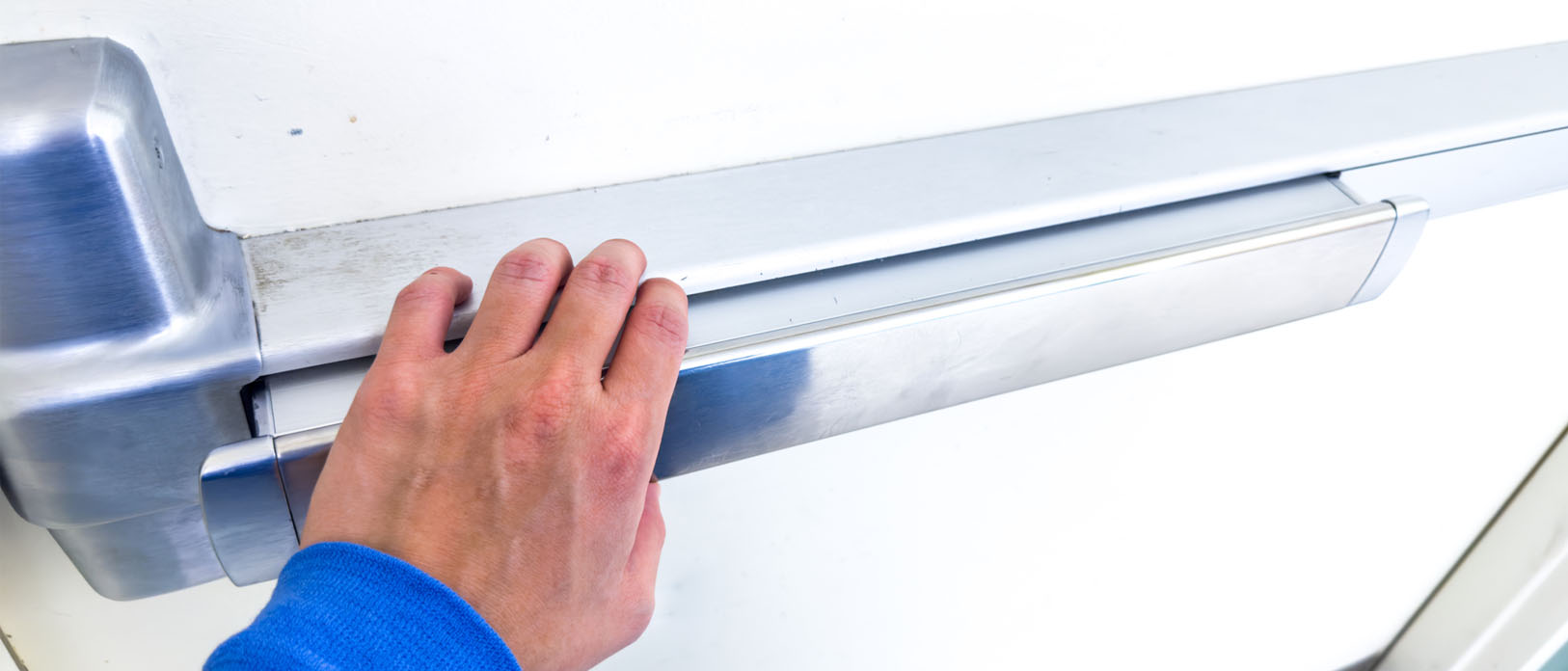
What Is a Fire Door Inspection?
A fire door inspection is a comprehensive assessment that helps to stop the spread of fire, contains smoke, and protects evacuation routes by checking the condition and components of fire doors to ensure they’re in good working order.
At Logic Fire and Security, our certified inspectors carry out thorough, non-destructive inspections that include:
A comprehensive visual inspection of each fire resisting doorset examining the fire resisting qualities of the door, hinges, hardware, and all essential components that ensure its proper functioning in case of fire.
What Components Are Checked During a Fire Door Inspection?
In the inspection process, we aim to gather as much information about the fire door sets as possible. By doing so, we can make an informed, competent decision around the fire door’s suitability for use and whether it is fit for purpose in its current state.
Our inspections include detailed checks of:
- Door Leaf and Frame Integrity With the door leaf being the main component of a fire door set, we check for traceability back to the manufacturer. A certificated door set will have either a label or plug which relates to its individual certification and fire testing report. This is vital for ensuring authenticity and proper fire rating.
- Hinges Hinges have an important role in ensuring the integrity of a fire door. We verify that fire door hinges remain adequately attached and have CE marks ensuring they are manufactured to British standard BS EN 1935: 2002. We also confirm the correct installation and maintenance of these hinges, which are vital to the integrity of a fire door set/assembly.
- Intumescent and Smoke Seals These seals are critical safety features. An intumescent seal is a strip of material encased in a rigid casing that, when exposed to heat, expands, closing any gaps around the door to stop fire and smoke spreading for a period of time. A separate seal is sometimes incorporated to provide ambient temperature or ‘cold’ smoke sealing, restricting smoke issuance prior to the intumescent seals reaching expansion temperature.
- Glazed Apertures Commonly used in communal door sets, glazed apertures provide added safety in everyday use. In the event of a fire, they aid detection of fire and smoke while providing visibility to potential escape routes. We verify that doors are glazed in accordance with the door manufacturer’s test evidence and that the glass is permanently marked with the glass name, supplier’s name, and performance classification.
- Door and Frame Gaps Ensuring the correct gaps between door and frame, and threshold gaps (between door and finished floor level) are vital in the performance of a fire door. We verify that gaps between door and frame are no bigger than 4mm and threshold gaps no bigger than 8mm, or in accordance with the door manufacturer’s tested evidence.
- Operating Furniture and Hardware For many ironmongery items, we ensure that only marked products are used on all fire doors and escape doors. Similar to hinges, these come in the form of CE marked items which align with the relevant British standards. We verify correct installation and maintenance of these items, necessary for the door set to be approved.
- Closing Devices We check that all self-closing devices are functioning correctly, ensuring the door will close properly in the event of a fire.
How to Check if a Fire Door is Compliant
While professional inspections are essential, as a responsible building manager, you should know the basics of fire door compliance. Here’s a simplified 5-point check you can perform between professional inspections:
- Certification: Look for the fire door certification label or plug (usually on the top edge of the door).
- Gaps: Check that gaps around the door are consistent and no more than 4mm when closed (about the thickness of a pound coin).
- Seals: Ensure intumescent seals are in place, intact, and free from paint.
- Hinges: Verify all hinges are firmly fixed with no missing screws.
- Closure: Make sure the door closes firmly onto the latch from any position without being dragged across the floor.
If any of these checks fail, contact Logic Fire and Security immediately for a professional assessment.

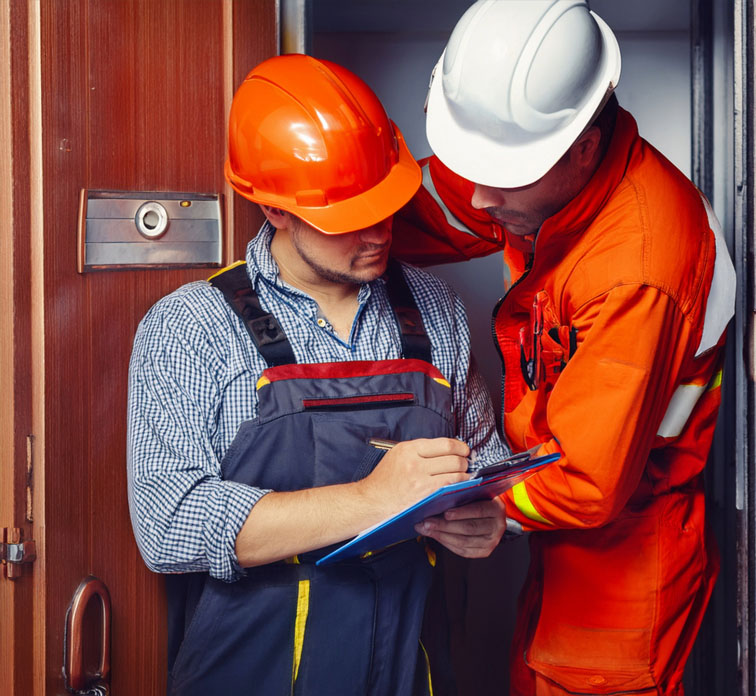
How Much Should a Fire Door Inspection Cost?
The cost of a fire door inspection varies depending on several factors:
- Number of doors to be inspected
- Complexity of the building layout
- Accessibility of fire doors
- Whether a full report and remediation plan are required
- Urgency of the inspection
Rather than focusing solely on cost, consider the value of a professional inspection. A thorough fire door inspection from Logic Fire and Security provides:
- Comprehensive assessment by certified inspectors
- Detailed reports with photographic evidence
- Clear remedial action plans
- Peace of mind that you’re meeting legal obligations
- Protection for your people, property, and business
We provide transparent pricing based on your specific requirements, with various service packages available to suit different budgets and needs.
The Fire Door Inspection Process at Logic Fire and Security
When you choose Logic Fire and Security for your fire door inspections, you benefit from our structured, thorough approach:
1. Initial Consultation
We discuss your specific requirements, building layout, and concerns to tailor our inspection accordingly.
2. Comprehensive Inspection
Our fire door inspectors conduct thorough, non-destructive fire door surveys and deliver detailed reports on the condition of the entire doorset.
3. Documentation and Reporting
Using advanced technology, we produce a clear, concise, comprehensive digital report which links any identified issues to the location on your building floor plans. Each door is given a unique ID number on the floor plan which corresponds with the digital survey report. A RAG (Red, Amber, Green) rating is included to enable you to identify which doorsets should be prioritised for remedial action.
4. Remedial Recommendations
The report outlines the existing condition and adequacy of the fire doorsets, and where necessary, recommends improvements that should be undertaken to make your buildings compliant with statutory requirements and best practice guidance, or to meet a specific business resilience objective.
5. Ongoing Support
We don’t just identify problems – we help you solve them, with remedial services and follow-up inspections to ensure continued compliance.
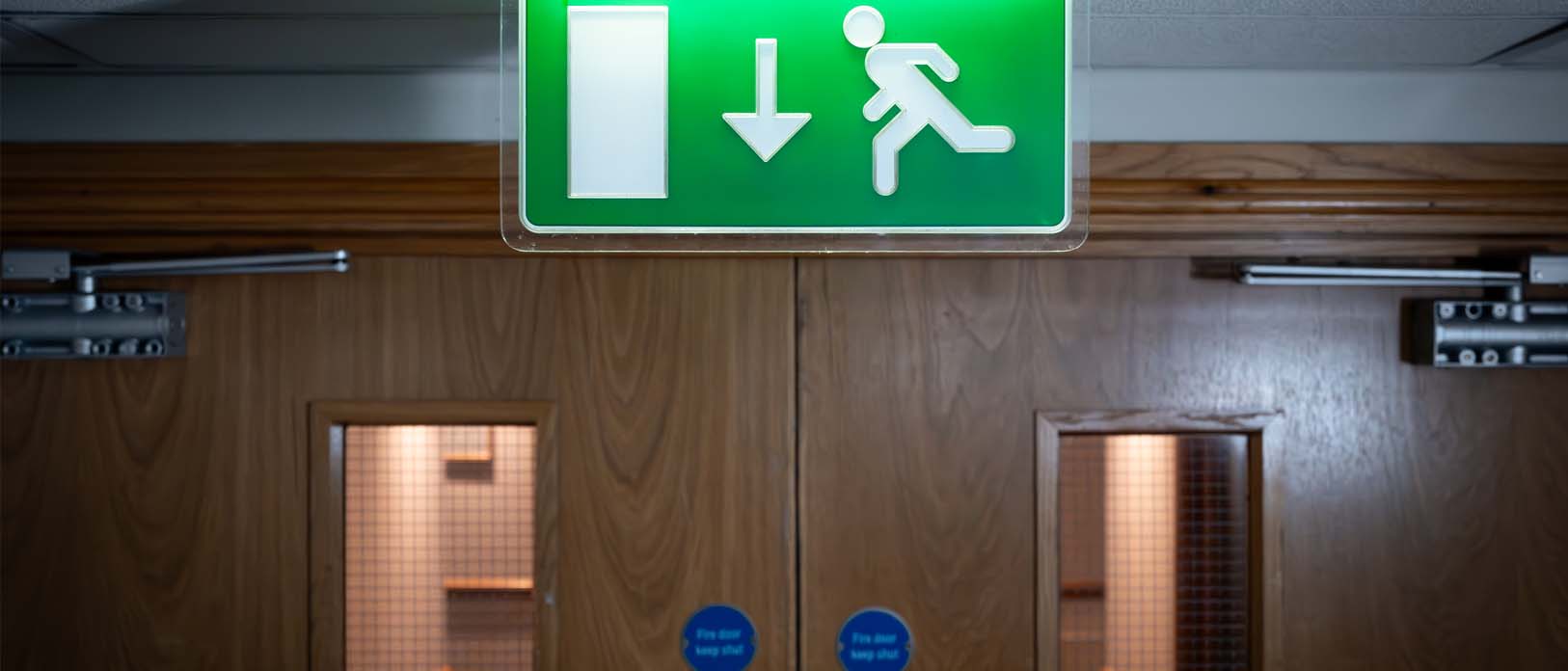
Why Fire Door Inspections Are Critical for Your Business
Far too often fire doors are not given a second glance, but in the event of a fire, they can and will be a vital lifeline for the occupants of your building. They also minimise damage to the property and the actual building itself by being a vital component in the passive fire protection of your building.
Everyday use of fire doors can result in damage to the door and its surroundings. Over time, this can affect the performance of the door, decreasing its effectiveness in the event of a fire. A regular inspection will provide you with peace of mind and the relevant documented proof you need to comply with fire safety regulations.
For building owners and facilities managers like you, fire door inspections deliver multiple benefits:
- Legal Compliance: Avoid hefty fines and potential imprisonment
- Insurance Validation: Many insurers require evidence of regular fire door inspections
- Protection of Life: Ensure safe evacuation routes for building occupants
- Asset Protection: Minimise potential property damage through effective compartmentation
- Peace of Mind: Delegate responsibility to certified experts
- Documentation: Receive comprehensive reports for regulatory inspections
Choose Logic Fire and Security for Your Fire Door Inspections
At Logic Fire and Security, we understand the concerns keeping you awake at night:
- “Am I doing enough to keep everyone safe?”
- “How can I be sure we’re fully compliant with regulations?”
- “What if our fire doors fail when they’re needed most?”
Our team of fully qualified and certified fire door inspectors has extensive knowledge and experience with fire door sets. We provide clear, straightforward advice without technical jargon, helping you understand exactly what’s required to keep your building safe and compliant.
Whether you manage a commercial building, office space, industrial facility, or public venue, our fire door inspection services give you the peace of mind that comes from knowing your passive fire protection measures are working as they should.
Take Action Today
Don’t wait for a fire safety audit or, worse, an incident to highlight issues with your fire doors. Contact Logic Fire and Security today for a comprehensive fire door inspection:
- Call our expert team on 0845 999 3222
- Email us at firesafety@logicfireandsecurity.com
- Fill out the ‘How Can We Be of Service’ form below
Protect your people, property, and peace of mind with professional fire door inspections from Logic Fire and Security – your trusted partner in comprehensive fire safety solutions.


